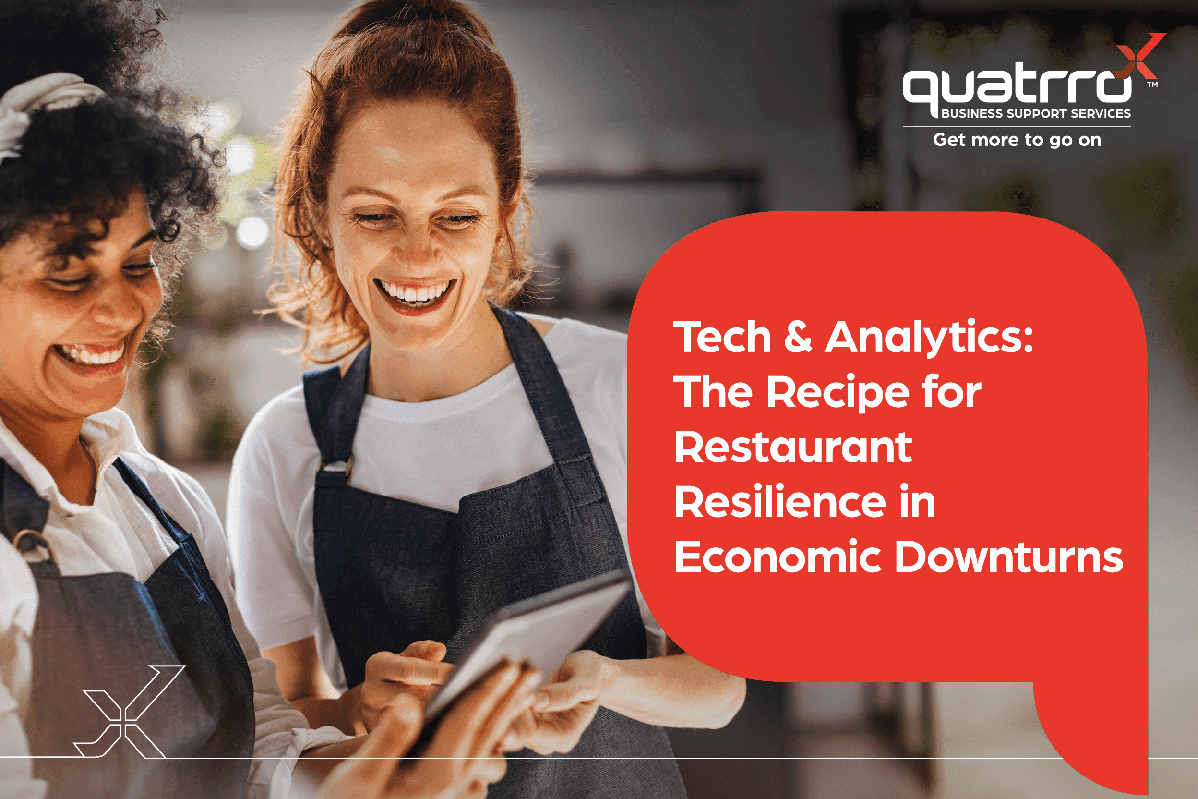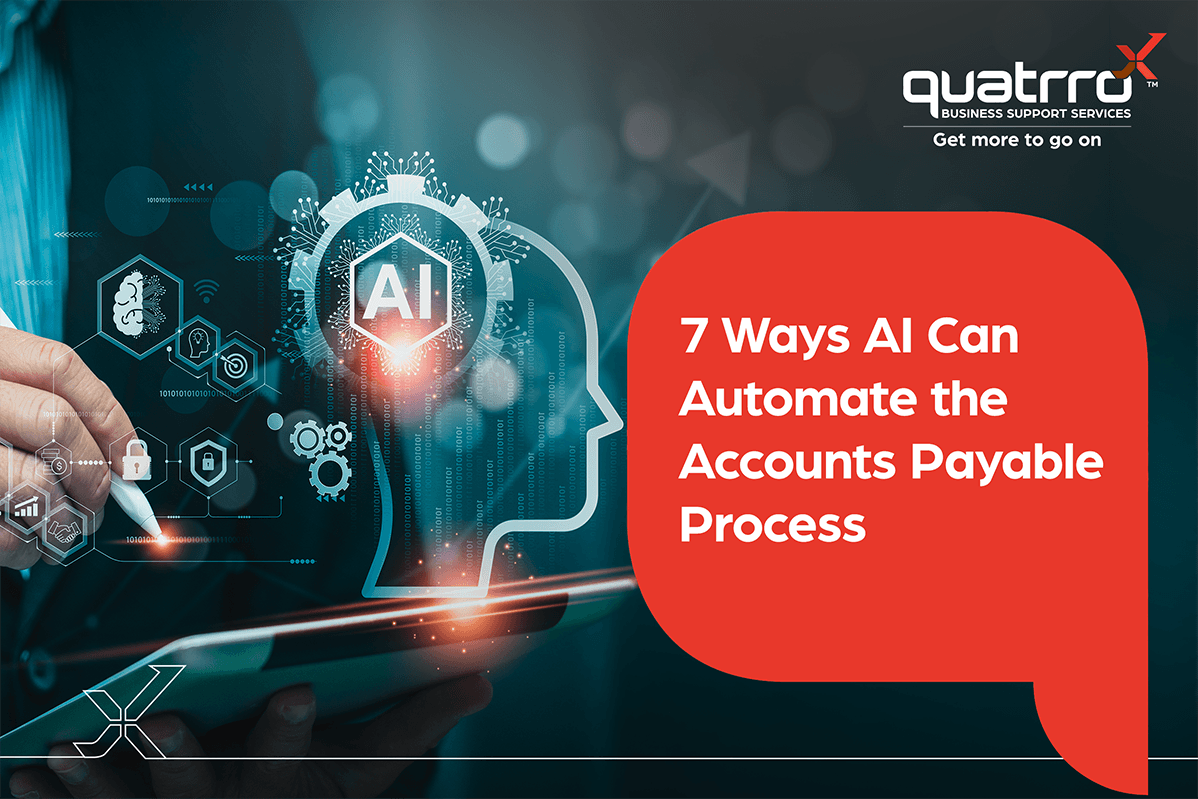Blog Details
Tech & Analytics: The Recipe for Restaurant Resilience in Economic Downturns
March 12, 2024

While decreased revenue during an economic downturn can make profitability more difficult for restaurants, there are a few ways in which they can use technology and data to optimize their business to increase revenue and cut costs. Restaurant technology can help restaurant owners use resources more efficiently, and data analytics can help them capitalize on opportunities.
Success no longer hinges solely on culinary skills; it increasingly depends on integrating technology and analytics into back-office operations, particularly in accounting and IT. Here’s what you should know about how technology and analytics can help restaurants stay resilient, focusing on practical solutions that enhance efficiency and adaptability.
Modern Restaurant Technologies
Advanced Point of Sale (POS) Systems
Today’s POS systems go beyond just processing payments — they have become central hubs for managing key aspects of the business. One of the most significant benefits of advanced POS systems is improved inventory management. They help track stock levels accurately, which is vital for controlling costs and reducing waste. By analyzing sales data, these systems can predict when to reorder supplies, helping to avoid both shortages and excess stock. Another critical feature is sales tracking. By analyzing which items are popular and at what times, restaurants can fine-tune their menus and pricing strategies. This data-driven approach helps increase profitability by focusing on what customers want and when they want it. Perhaps the most impactful aspect of modern POS systems is their ability to gather and analyze customer data. This allows for personalized marketing and improved customer service. For instance, a restaurant can use data from its POS system to send targeted offers to customers, encouraging repeat visits.Online Platforms for Reservations and Ordering
Online reservation and ordering platforms enable restaurants to expand their reach and cater to the growing demand for online and mobile ordering options. Online ordering systems allow restaurants to maintain revenue streams by facilitating takeout and delivery services without dedicating employee time to taking orders over the phone. By offering online reservations, restaurants can streamline their booking process, reduce no- shows, and manage seating more efficiently. Integrating an online reservation system can increase table turnover by allowing restaurants to anticipate customer flow and prepare accordingly.Touchscreen Technology in Restaurants
Touchscreens have become increasingly popular in restaurants, offering a range of benefits for both customers and staff. Touchscreens can be implemented in various ways within a restaurant of any type – here are some examples: Self-ordering kiosks: These allow customers to browse menus, customize orders, and pay directly, reducing wait times and staff workload. Tabletop tablets: These enable interactive menus, order placement, bill splitting, and even entertainment options, enhancing customer engagement. Kitchen display systems (KDS): Touchscreens in the kitchen streamline order communication, reducing errors and improving efficiency. Staff handheld devices: Servers can use tablets to take orders, process payments, and manage tasks, increasing mobility and efficiency. As with any business decision, each business owner/leader must weigh the benefits and risks to determine the right path forward or investment for their business. Here are some pros/cons to help with your analysis of whether implementing touchscreen technology is right for your restaurant:Pros:
-
Improved customer experience: Self-service options offer convenience and control, while interactive menus can boost engagement and satisfaction.
-
Increased efficiency: Touchscreens streamline order taking, payment processing, and communication, leading to faster service and reduced wait times.
-
Reduced errors: Digital systems minimize manual input errors, ensuring order accuracy and improving kitchen efficiency.
-
Data insights: Touchscreen systems provide valuable data on customer behavior and preferences, aiding menu optimization and marketing strategies.
Cons:
-
Cost: Implementing and maintaining touchscreen technology can involve an initial investment.
-
Technology dependence: System outages or malfunctions can disrupt operations.
-
Learning curve: Staff and customers may require training to adapt to new technology.
-
Potential job displacement: Self-service options might raise concerns about job losses in the long run among employees.
Data Analytics For Restaurants
 |
Sales Data AnalyticsBy examining sales patterns, restaurants can identify which dishes are bestsellers and which are underperforming. This analysis enables more informed decisions about menu design, portion sizes, and pricing. For instance, a restaurant may find that certain dishes have higher sales during weekends and adjust their stock and staffing accordingly to maximize efficiency and customer satisfaction. |
 |
Customer Feedback AnalyticsIn the age of social media and online reviews, customer feedback has never been more accessible. Analyzing customer reviews across various platforms can provide valuable insights into what customers love and what they think could be improved. Restaurants can use sophisticated tools to aggregate and analyze feedback from multiple sources, helping them respond promptly and effectively to customer concerns. |
 |
Labor AnalyticsLabor costs are one of the most significant expenses for restaurants. Efficient management of staff scheduling and productivity is vital for maintaining service quality while controlling costs. Labor analytics tools help restaurants analyze staffing needs, predict busy periods, and schedule staff more effectively. |
 |
Marketing AnalyticsIn a competitive market, understanding the effectiveness of marketing strategies is vital. Marketing analytics tools help restaurants measure the impact of their marketing campaigns, identify the most effective channels, and understand customer acquisition costs. This information is crucial for allocating marketing budgets effectively and maximizing return on investment. |
 |
Predictive AnalyticsPredictive analytics represents the frontier of data-driven decision-making in the restaurant industry. By forecasting future trends in customer behavior, sales, and inventory needs, restaurants can make proactive adjustments to stay ahead of the curve. This foresight is especially valuable in navigating economic downturns, as it allows for strategic planning and resource allocation. |








